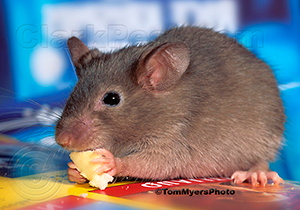A Mouse in your house? Where there’s one, there’s many

Do you know how to spot the signs of a rodent infestation in your home? Some are more obvious than others. But as a rule, rodents prefer to work in the shadows, out of sight from humans.
While rodents are a problem year round, every fall and winter, they invade an estimated 21 million U.S. homes. This makes recognizing the signs of the possible presence of rodents crucial to preventing an infestation and allowing these prolific breeders – mice can produce a dozen young’uns every three weeks – from establishing a home inside your home.
Rodent pressure is rising across the United States. A recent survey of nearly 275,000 Americans, conducted by the National Pest Management Association, revealed that rats are America’s biggest pest concern for health and home issues, and that rodents are spotted almost twice as often in bathrooms than in any other area in the home.
The health risks presented by mice and rats are well documented: rodents can spread 200 different pathogens and 35 diseases to humans. But do you know how easy it is for rodents to gain access to your home? It’s a lot easier than you think.
Rodents can squeeze through tiny openings and gaps in the foundation, along the roof line, near a door frame, or in siding – as small as a dime for mice and a quarter for rats – to gain entry.
Clark, your neighborly rodent, termite and overall general pest control expert, would like to help California and northern Nevada homeowners protect their home, food, and family by putting up a stop sign to rats and mice.
Here are six warning signs that these unsavory characters may be lurking around your home, seeking food and shelter:
- Droppings: Fecal pellets are often left behind in places where food is stored, such as the kitchen, cabinets, or pantries, as well as under sinks, inside cardboard boxes, and along baseboards.
- Gnaw marks: Rodents can chew through almost any type of material, including plastic and lead pipes, to obtain food or water. House mice and Norway rats are also known to gnaw on wires behind walls, increasing the risk of fire in the home.
- Nests: Rodents prefer to nest in dark, secluded areas where there is little chance of disturbance. House mice like to build nests out of items like shredded paper products, cotton, wall insulation, and fabrics.
- Tracks or rub marks: Rats tend to leave dark grease or dirt marks from their oily fur along walls and floorboards as they follow a trail throughout the home between their nest and food.
- Strange noises: Hearing strange noises in a wall, especially at night, can be a bit concerning. Chances are these sounds can be attributed to a family of rodents scurrying about the house, between the walls, and up in attics.
- Seeing an actual rodent: Mice can breed rapidly, so if you spot one, it’s likely there are more. In fact, a female house mouse can give birth to a half-dozen pups every three weeks – up to 35 young per year.
If you experience any of these warning signs, you may have rodents. But don’t worry. The rodent management experts at Clark are a call, text, or email away. Call or text (800) WE-NEED-YOU (936-3339) or email us at clarkcares@clarkpest.com.
We can help identify if rodents are present and what may have caused them to enter your home, and we’ll also tell you about solutions to eliminate the problem and keep it from returning.
Until next time, the pest management professionals at Clark Pest Control thank you for helping to keep unwanted pests out of your home.


